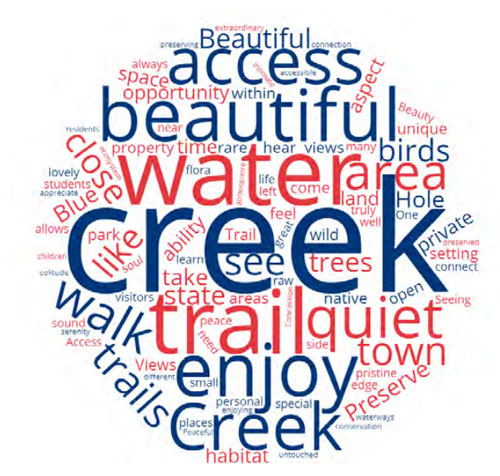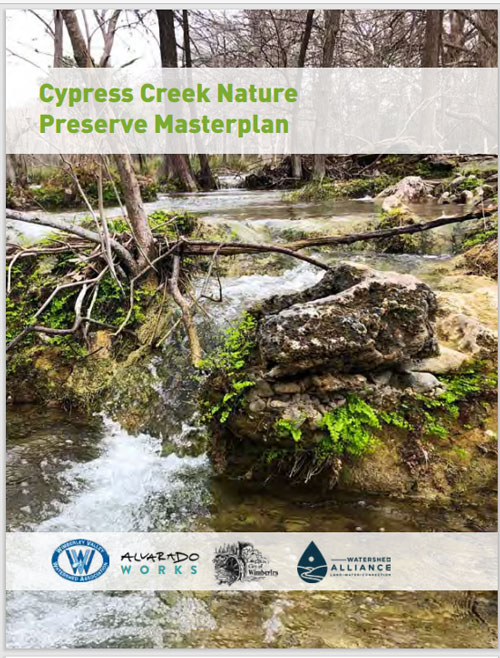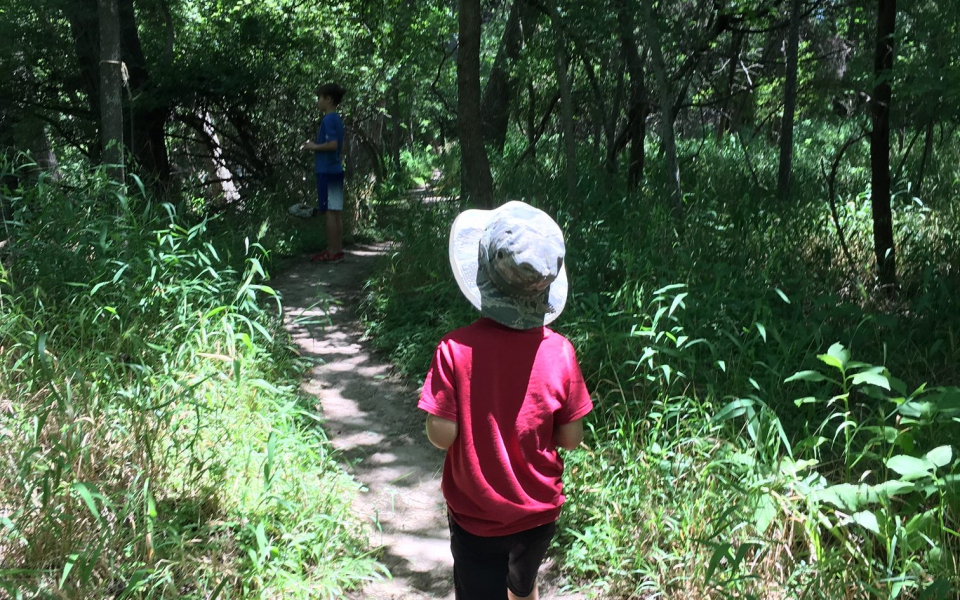 In 2002, The City of Wimberley acquired The Cypress Creek Nature Preserve—7.24 acres of land along Cypress Creek stretching from just east of Wimberley Square to the southwestern edge of Blue Hole Regional Park. Termed a remnant property, the land has never been farmed or developed, so it offers visitors the opportunity to experience a pristine riparian ecosystem in which a wide variety of plants and wildlife thrive in their natural state. The Watershed Association holds a conservation easement on the property designed to protect this beautiful piece of undisturbed creekside forest in the heart of Wimberley.
In 2002, The City of Wimberley acquired The Cypress Creek Nature Preserve—7.24 acres of land along Cypress Creek stretching from just east of Wimberley Square to the southwestern edge of Blue Hole Regional Park. Termed a remnant property, the land has never been farmed or developed, so it offers visitors the opportunity to experience a pristine riparian ecosystem in which a wide variety of plants and wildlife thrive in their natural state. The Watershed Association holds a conservation easement on the property designed to protect this beautiful piece of undisturbed creekside forest in the heart of Wimberley.
The preserve demonstrates the importance of riparian habitat protection and the benefits of healthy riparian systems. The majestic cypress, oak, pecan, and walnut trees that line the creek supply cooling shade, food base, and high-quality habitat for the abundant aquatic, terrestrial, and avian inhabitants. With higher biodiversity than upland ecosystems, healthy riparian environments can provide more robust protection from invasive species. This stronger ecosystem also protects water quality by filtering debris and nutrients as well as maintaining constant levels of dissolved oxygen adequate to support fish and other aerobic creatures in the creek.
The Watershed Association works with city staff, community, and Master Naturalist volunteers to restore eroded creek banks, improve and maintain trails, and develop signage and educational materials.
The trail winds through shaded bottomland lush with Inland Sea Oats, Texas Red Buckeye, and other native plants. Healthy riparian ecosystems like the Cypress Creek Nature Preserve serve the community by safeguarding natural resources, public health, and the local economy. In order to protect these conservation values, the easement requires visitors to remain out of the creek and on the trail.

For some, the appearance of a preserve left in its natural state may seem like a lack of care. We’ve become accustomed to manicured parks. But fallen trees and organic flood debris left in place are the way mother nature heals and regenerates her living systems. Cypress trees uprooted by flash floods create richly diverse habitat and eventually spawn multiple new trees preventing further soil erosion and reinforcing banks. Allowing such cycles to run their course ensures that the benefits of resilient riparian forests accrue far into the future.
The preserve helps prevent flooding in the Wimberley town square, and downstream on the Blanco, by slowing and stabilizing the flow of water during heavy precipitation. The dense
riparian ecology improves groundwater infiltration in the area, reducing the negative
effects of drought and reducing the environmental effects of urbanization by improving air
quality, and reducing the heat island effect, which has a positive effect on public health. The preserve creates a crucial wildlife corridor that supports beneficial pollinators, aquatic life, and
charismatic mammals. The trail system provides locals with recreational opportunities, improving people’s mental and physical health, and contributes to the tourism
economy by multiplying opportunities in the town square area and supporting
numerous Bed and Breakfast businesses on its northern banks.
If you enjoy hiking, the Jacob’s Well Natural Area is another fantastic destination. The Hays County Parks and Open Spaces bond (Prop A passed in the 2020 November election) promises to add an additional 117 acres through the Coleman’s Canyon Preserve project. Imagine the possibilities!

